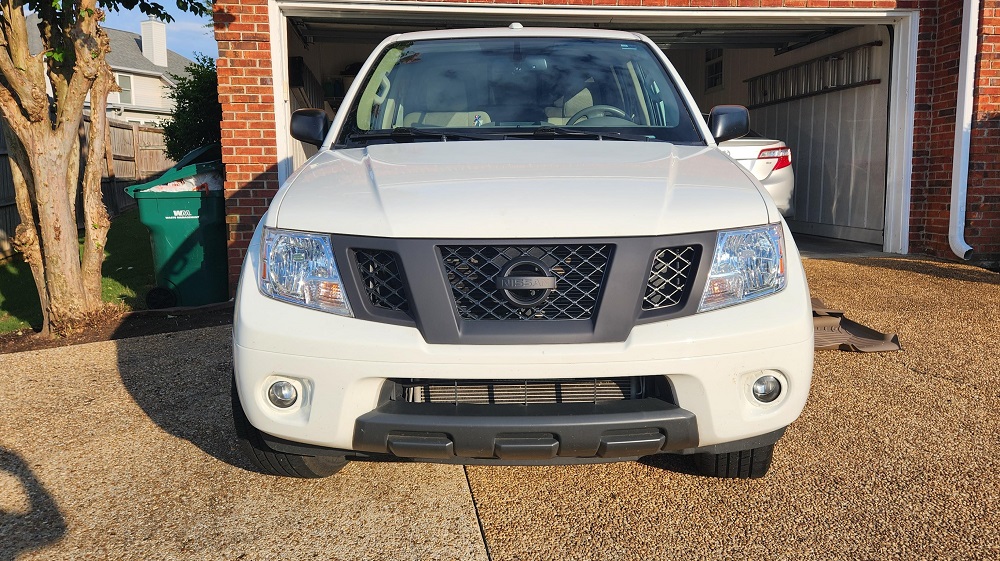In the realm of automotive customization, the question of whether you can sandblast chrome off a bumper often stands as a formidable challenge. Transforming the aesthetic of your vehicle involves navigating the complexities of chrome removal, and in this in-depth guide, we’ll explore the nuances, best practices, and alternatives to help you embark on this exciting journey.
Understanding the Intricacies of Chrome Removal
Chrome-plated bumpers, renowned for their durability and resistance to corrosion, present a unique challenge when attempting to modify or restore a vehicle’s appearance. The hardness of chrome demands specialized techniques for successful removal without compromising the integrity of the underlying material.
1. The Fundamentals of Sandblasting
What Exactly is Sandblasting?
At its core, sandblasting is a technique that involves propelling fine abrasive particles at high velocities to eliminate contaminants or coatings. While effective for many surfaces, chrome’s exceptional durability necessitates specific considerations in the sandblasting process.
Selecting the Ideal Abrasive Material
When undertaking chrome removal, the choice of abrasive material is paramount. Aluminum oxide or silicon carbide abrasives are preferred, as they offer effective removal without causing damage to the base material.
Equipment Essentials
Investing in the right sandblasting equipment is crucial. Ensure your arsenal includes a quality sandblaster, appropriate abrasive material, and a compressor capable of delivering the necessary pressure.
2. Prioritizing Safety: Essential Protective Measures
Gear Up with Personal Protective Equipment (PPE)
Before commencing any chrome removal project, prioritize safety by donning protective gear. Goggles shield your eyes, gloves protect your hands, and a respirator guards against inhaling abrasive particles.
Environmental Precautions
Creating a controlled environment is essential for both your safety and the protection of the surrounding area. Adequate ventilation and containment measures prevent abrasive materials from becoming airborne hazards.
3. Navigating the Sandblasting Process Step-by-Step
Commence with Surface Preparation
Begin by thoroughly cleaning the bumper to eliminate any dirt or grease that could compromise the efficiency of the sandblasting process.
Fine-Tuning Pressure and Nozzle Size
Achieving optimal results involves adjusting the sandblasting equipment to recommended pressure levels and nozzle sizes. This ensures effective chrome removal without causing unintended damage.
Maintaining Consistency in Application
Consistency is key during the sandblasting process. Maintain a uniform distance and speed to guarantee even removal of chrome across the entire bumper surface.
4. Exploring Alternatives to Sandblasting
Chemical Stripping: A Viable Option
For those hesitant about sandblasting, chemical stripping agents offer a viable alternative. These solutions break down chrome plating, facilitating easier removal.
Precision with Grinding and Polishing
In instances where delicate precision is required, utilizing a grinder or polishing wheel can manually remove chrome. This method demands patience but allows for meticulous control.
5. Navigating Challenges and Important Considerations
Chrome Thickness: A Determining Factor
The thickness of the chrome layer plays a significant role in the success of removal methods. Thicker plating may necessitate more time and effort to achieve the desired results.
Guarding Against Damage to the Base Material
Exercise caution to prevent inadvertent damage to the underlying material. Delicate surfaces require gentler techniques, emphasizing the need for a careful and methodical approach.
6. Post-Removal Care: What to Do Next
Thoroughly Clean the Surface
After successfully removing chrome, meticulous cleaning is imperative to eliminate any remaining abrasive particles or chemical residues that could compromise the final finish. (See Also: Scotchgard Auto vs Scotchgard Fabric: Choosing the Best Protection for Your Car Interior)
Consider Surface Finishing Options
To complete the transformation, apply a primer and paint to protect the exposed material and achieve a polished, refined appearance.
Expert Tips: Navigating Chrome Removal with Finesse
Embarking on the endeavor to sandblast chrome off a bumper requires more than just tools and techniques. To elevate your chrome removal game, consider these expert tips that delve into the intricacies of the process, ensuring a successful and flawless transformation.
1. Assess Chrome Thickness Before Diving In
Before selecting a removal method, assess the thickness of the chrome layer. Thicker plating may demand a more patient and thorough approach, while thinner layers could streamline the process.
2. Invest in Quality Abrasives for Optimal Results
Choosing the right abrasive material is paramount. Invest in high-quality abrasives like aluminum oxide or silicon carbide to ensure effective chrome removal without compromising the integrity of the underlying material.
3. Regularly Monitor Pressure and Nozzle Size
Throughout the sandblasting process, continuously monitor and adjust the pressure and nozzle size. Maintaining optimal settings ensures precision and prevents unintentional damage to the bumper.
4. Prioritize Safety: Gear Up Adequately
Safety should never be overlooked. Prioritize personal protective equipment (PPE) – from goggles and gloves to a respirator – to shield yourself from potential hazards during the chrome removal process.
5. Environmental Control is Non-Negotiable
Create a controlled environment by implementing proper ventilation and containment measures. This not only safeguards your health but also prevents abrasive materials from causing unintended damage to surrounding areas.
6. Embrace Alternatives When Appropriate
While sandblasting is a popular method, don’t shy away from alternative techniques like chemical stripping or manual grinding, especially in intricate or delicate areas where precision is paramount.
7. Practice Even Application for Consistent Results
Consistency is the key to an even chrome removal. Maintain a uniform distance and speed during the sandblasting process to achieve a consistent finish across the entire bumper surface.
8. Exercise Patience with Manual Methods
If opting for manual methods like grinding or polishing, patience is your ally. Take your time to ensure precision and avoid inadvertently damaging the underlying material.
9. Post-Removal Cleanup is Crucial
After successfully removing chrome, invest time in thorough post-removal cleanup. Eliminate any lingering abrasive particles or chemical residues to guarantee a pristine surface.
10. Finish Strong with Protective Coating
Complete the chrome removal process by applying a primer and paint. This not only protects the exposed material but also provides the finishing touch for a polished, refined appearance.
11. Test Techniques in Inconspicuous Areas
Before tackling the entire bumper, test your chosen chrome removal technique in inconspicuous areas. This allows you to assess its effectiveness without committing to the entire process. (See Also: Pinnacle vs. Wolfgang Wax: Unveiling the Best Car Care Products)
12. Seek Professional Guidance if Uncertain
If uncertain about the best approach for your specific bumper, don’t hesitate to seek professional guidance. Consulting with experts can provide valuable insights and prevent costly mistakes.
13. Embrace a Methodical Approach
Approach chrome removal methodically. Whether it’s sandblasting or an alternative technique, a methodical approach ensures a more controlled and successful outcome.
14. Consider Full or Partial Removal Based on Design
Evaluate whether full chrome removal is necessary for your design goals. In some cases, partial removal may achieve the desired aesthetic while minimizing the overall effort.
15. Document Your Process for Future Reference
Keep a detailed record of your chrome removal process. Documentation serves as a valuable reference for future projects, allowing you to refine techniques and improve efficiency.
With these expert tips in your arsenal, you’re well-equipped to navigate the intricate landscape of chrome removal, ensuring that your bumper transformation is not only successful but also a testament to your expertise in automotive customization.
FAQs: Decoding the Mysteries of Chrome Removal
Delving into the world of chrome removal can be a labyrinth of questions. Fear not! This FAQ section aims to unravel the mysteries, providing concise answers to common queries surrounding the process of sandblasting chrome off a bumper.
Q1: Can I Sandblast Chrome Off a Bumper Myself?
A: Absolutely! Sandblasting chrome off a bumper is a feasible DIY project. With the right tools, precautions, and techniques, you can transform your vehicle’s appearance with confidence.
Q2: How Do I Determine the Thickness of the Chrome Layer?
A: Assessing chrome thickness is crucial. Conduct a visual inspection and, if needed, consult with professionals. Thicker chrome may require more time and effort during the removal process.
Q3: Are There Alternatives to Sandblasting?
A: Yes, several alternatives exist, including chemical stripping and manual methods like grinding or polishing. The choice depends on your preferences, the bumper’s design, and the level of precision required.
Q4: What Abrasive Material Should I Use for Sandblasting?
A: Opt for high-quality abrasives like aluminum oxide or silicon carbide. These materials effectively remove chrome without causing damage to the underlying bumper material.
Q5: Is Sandblasting Safe for Chrome Removal?
A: When performed with the right safety measures, sandblasting is a safe and effective method. Use personal protective equipment (PPE) and ensure proper environmental controls to minimize risks.
Q6: Can I Remove Chrome from Specific Areas Only?
A: Yes, you can choose to remove chrome selectively. Evaluate your design goals and decide whether full or partial removal aligns with your aesthetic preferences.
Q7: How Do I Protect the Exposed Material After Chrome Removal?
A: Apply a primer and paint to protect the exposed material. This not only safeguards against corrosion but also enhances the overall appearance of the bumper.
Q8: Should I Test Removal Techniques Before Starting?
A: Absolutely. Test your chosen removal technique in inconspicuous areas to gauge its effectiveness and ensure it meets your expectations before committing to the entire process. (See Also: How to Put 303 on Tires: A Step-by-Step Guide for Tire Maintenance)
Q9: What Precautions Should I Take During Sandblasting?
A: Prioritize safety by wearing the appropriate personal protective equipment (PPE). Create a controlled environment with proper ventilation to prevent health hazards.
Q10: Can I Seek Professional Assistance for Chrome Removal?
A: Certainly. If unsure or if the project seems complex, seeking professional guidance is a wise decision. Experts can provide valuable insights and ensure a successful outcome.
Q11: How Long Does Chrome Removal Typically Take?
A: The duration varies based on factors such as chrome thickness and chosen removal method. Be patient and allocate sufficient time to achieve the desired results.
Q12: Are There Risks of Damaging the Bumper During Chrome Removal?
A: While rare, there is a risk of damage if not performed carefully. Follow recommended techniques, monitor pressure, and maintain consistency to minimize this risk.
Q13: Can I Use Sandblasting on All Types of Bumpers?
A: Sandblasting is suitable for most bumpers, but consider the bumper material. Delicate materials may require gentler techniques to avoid unintended damage.
Q14: Are There Environmental Considerations During Chrome Removal?
A: Yes, environmental precautions are vital. Set up a controlled workspace with proper containment and ventilation to protect yourself and prevent abrasive materials from spreading.
Q15: Can I Document the Removal Process for Future Reference?
A: Absolutely. Documenting your chrome removal process is a smart move. It serves as a valuable reference for future projects, allowing you to refine techniques and improve efficiency.
Armed with answers to these frequently asked questions, you’re ready to embark on your chrome removal journey with confidence and clarity.
Conclusion: A Roadmap to Successful Chrome Removal
In conclusion, the journey of sandblasting chrome off a bumper is a nuanced process that demands a combination of technique, precision, and safety precautions. Whether you choose sandblasting, chemical stripping, or manual methods, the key lies in understanding the intricacies involved and adopting a meticulous approach.
Armed with insights into the techniques, precautions, and alternatives discussed, you can confidently embark on the journey of transforming your vehicle’s bumper. Remember, the process of chrome removal is as crucial as the end result – a revitalized, head-turning bumper that reflects your unique style and automotive personality. Embrace the challenge, enjoy the journey, and watch as your vehicle undergoes a stunning metamorphosis.



